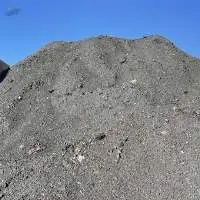
Supplier: Plastic scrap (ldpe, pp, pvc, pet, pmma, hdpe, bopp, pe, ps, abs etc)., textile waste (cotton hosiery clips, cotton thread waste), denim, unbleached, selvedges rama string, rags for mattresses, wiping rags, licekrin dropings 100% cotton bales, card fly etc.) paper scrap
We are glad to propose 500 MT of stain less steel mill scale. Mill scale is formed on the outer surfaces during by the hot rolling lamination of stainless-steel products. At a visual inspection the material is a hard brittle sand and is mainly composed of iron oxides, mostly ferric, and is bluish black in colour, but it also contains considerable alloying elements such as chromium and nickel. The recovery ratio after melting in furnace for the most valuable alloy elements is: - Ni: 3.5 - 4.5% - Cr: 6-8% From the chemical and physical analysis performed on the scrap, and according to the European environmental rules, the material has been classified as a special non dangerous waste, listed in green list. In particular the mill scale can be classified as follows: Waste code: 10 02 10 The material is stored on cemented flooring, and it can be loaded loose in tipper trucks or containers. Chemical analysis of the material is available on request.
Mill scale, is formed on the outer surfaces of plates, sheets or profiles when they are being produced by rolling hot iron or steel billets in rolling or steel mills. It looks like a hard brittle sand and is mainly composed of iron oxides, mostly ferric, and is bluish black in color. Being produced during the reheating, conditioning and hot rolling operation for the production of steel articles, the mill scale initially adheres to the steel surface and protects it from atmospheric corrosion, provided no break occurs in this coating. From the chemical and physical analysis performed on the scrap, and according to the european environmental rules, the material has been classified as a special non dangerous waste, listed in green list In particular the mill scale can be classified as follows: Einecs (european commission no.): 266-007-8 Waste code: 10 02 10 Basel code: b 12 30 Hs code: 2619.00
This Cast Iron slag is a by-product derived from the production of thermal insulating products. The byproduct is a ferrous slag which can be utilised in an electric arc furnace to produce crude steel. Physical Description On visual inspection, it appears to be made up of irregular shapes. Dimension: 500mm -800mm Chemical Composition Its chemical composition is homogeneous and stable with Fe contents in the range of 90 +/- 5% and P contents < 0.6% S around 0.15% and C% around 3.5%. Packing: Loose in container Loading: in 20 Container For further information, please feel free to contact us.
Drilling and civil engineering bentonite is made by API and OCMA standardIt can be used as low solid phase mud in under ground civil engineering and drilling field  The specifications Item Mud  yieldM3T Filter  loss ML30min Yield  1b100ft2 Moisture  Wet Sieve Analysis0074mm gel strength HH01 18 12 3xPV 12 4 18 25 40 HH02 1218 1218 3xPV 12 4 15 20 30
Supplier: Nickel sludge, zinc ash, copper ore, lead ore, chrome ore, manganese ore, bauxite ore, iron ore, iron ore pellets, tin ore, ir64 rice, ir 64 5% broken rice, zinc ash, raw red chilli, chrome ore, iron skull, 1121 sella white basmati rice, 3 ply surgical masks
Buyer: Zinc ash, copper concentrate, lead ore, tin ore, nickel sludge
Supplier: Talc, mica, fly ash, bauxite, calcined bauxite, potash feldspar, quartz, sand, silica sand, micro silica, silica fume, bentonite, bleaching clay, ball clay, ethyl acetate
Ball Clay: A member of kaolinite family, Ball Clay is renowned for its plasticity and green strength. They consists varying proportions of kaolinite, mica and quartz, with small amounts of organic matter and other minerals, and are commercially values because they increase the workability and strength of various ceramic bodies and have white or near white firing characteristics. Ball clay is processed to minimize the levels of coarse particles. This enhances better workability and higher strength. Applications : It forms a major part of many ceramic applications, including sanitary ware, tiles, table wares and to an increasing extent non-ceramic applications like functional fillers and advanced application for example technical ceramics.
China Clay: China Clay is a clay mineral with the chemical composition AlSiO3O5(OH)3. It is layered silicate mineral. It is soft earthy, usually white in color, produced by the chemical weathering of Aluminium Silicate mineral like Feldspar. Commercial grades of China Clay are supplied and transported as dry powder form, semi dry noodle form or as slurry. Applications: - It is used in Cer/bamics for body & glazing of Tiles and Sanitary Wares. - In paper it is used as filler. It is also used for paper coating purpose. - It is used in paint also to extend Titanium Dioxide (TiO2) and modify gloss level. - It is used in rubber to enhance reinforcement properties.





